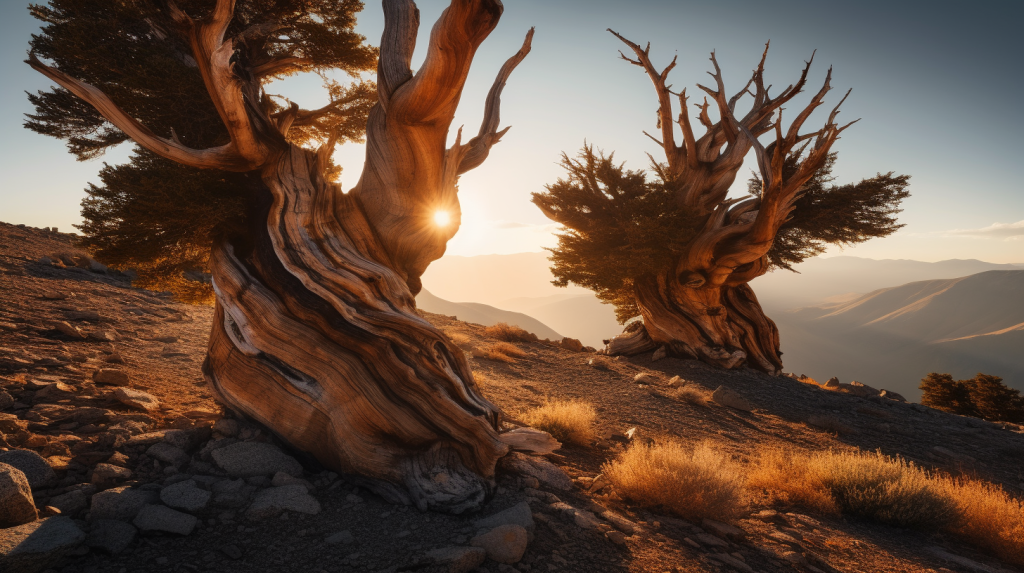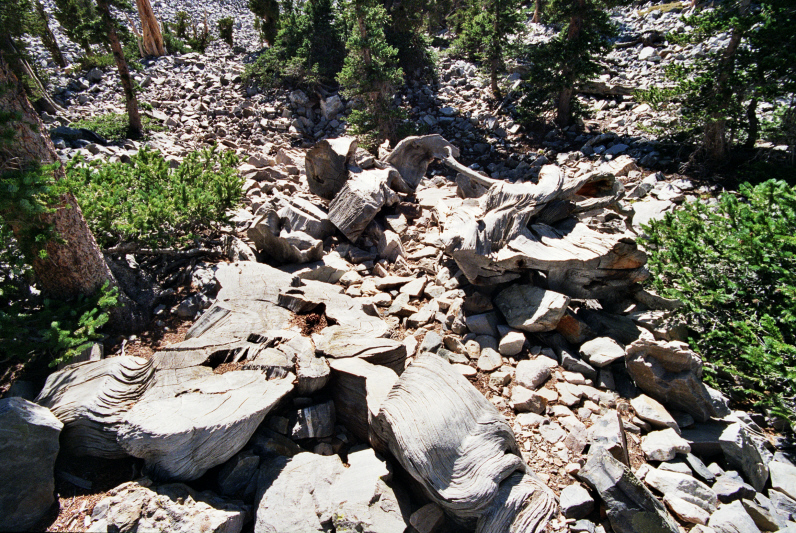
In the desolate high-altitude desert terrain of California’s White Mountains, the Bristlecone Pine trees silently narrate an epic tale of survival against the harshest of environmental conditions. For millennia, these ancients have withstood drought, freezing temperatures, and relentless winds, their gnarled and twisted forms bearing testament to their unfathomable age. Yet, in an ironic twist of fate, one of these seemingly invincible trees—known as Prometheus—fell not to the ravages of nature, but to the hand of man.

Prometheus, named after the Titan who defied the gods in Greek mythology, was an extraordinary specimen of the Pinus longaeva species, or the Great Basin Bristlecone Pine. It is believed to have germinated around the time of the Bronze Age, making it likely older than the Great Pyramids of Giza. By the 1960s, when its existence was noted by researchers, it was already around 4900 years old. Unfortunately, that’s when tragedy struck.

In 1964, a young geographer named Donald Rusk Currey was studying ice age glaciology in the Wheeler Peak area. He was particularly interested in Bristlecone pines, whose rings provided vital climatic information about the past. Currey had been coring several trees to measure their age but encountered difficulties with Prometheus. The coring tool broke, and despite Currey’s best intentions, the National Forest Service granted him permission to fell the tree, unaware of its significance.
Once Prometheus was cut down, its extraordinary age became clear. By counting its growth rings, Currey discovered that Prometheus was approximately 4900 years old, making it the oldest known tree in the world at the time. The scientific community and general public were outraged at the unnecessary loss, sparking conversations about the protection of these ancient trees. Prometheus’s death was not in vain, however. It raised global awareness of the value and longevity of Bristlecone pines and led to increased protections for these venerable beings.
Even as we mourn Prometheus, it’s important to remember that it is not the end of the story for the Bristlecone Pines. There are still many of these ancient trees alive today. One of them, Methuselah, is known to be 4,851 years old and is often considered the oldest living tree in the world—its exact location is kept a secret to protect it. The tree’s name refers to the biblical patriarch Methuselah, who ostensibly lived to 969 years of age, thus becoming synonymous with longevity or old age in many European languages including English. There’s also the potential for even older specimens. Given the harsh, remote habitats these trees often occupy, it is likely that there are older Bristlecones yet to be discovered.

Prometheus’s fate is a stark reminder of the delicate balance between scientific curiosity and preservation. Its tale underscores the importance of maintaining a respectful and protective attitude towards the planet’s ancient organisms. Even as we strive to unlock the secrets of our world’s past, we must ensure we’re not compromising its future.
Today, a cross-section of Prometheus is on display at the Great Basin National Park visitor center in Nevada, its thousands of growth rings are a haunting testament to its incredible longevity and a sobering monument to the tree that fell to human curiosity. Let Prometheus’s tale continue to be a clarion call for conservation, a reminder of the sanctity of life, no matter how gnarled or unassuming it might appear.